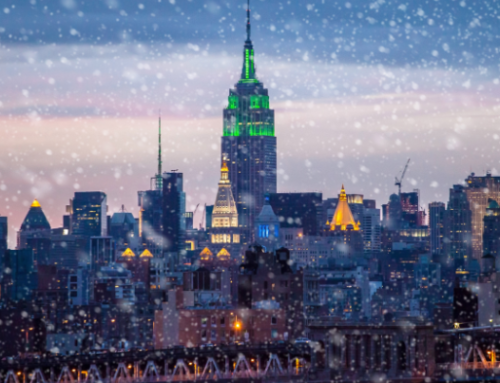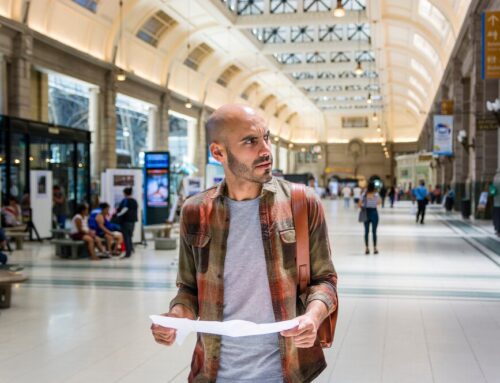Top 9 Museums to Visit in New York with Your Kids
The purpose of every planned trip is not just about pleasure. It should feed the eyes as well as the brains. Family bonding busts off the stress and leaves an opportunity for lifetime memories. Bringing the family, especially kids, in a museum tour is something to consider in order to educate them about ancient wonders and the things of the past. It will be a memorable experience adding in your sight-seeing the top 9 museums to visit in New York with your kids. An educational trip like this rewinds and reminds history that has been.
The Metropolitan Museum of Arts (the MET)
The Met is the largest and most well-known museum in the USA. It ranked third in the world as the most visited museum annually. Considered as the finest in the land, the architectural icon houses a diverse collection of around two million works of art. At The Cloisters, the wonders of medieval times (dating back 5,000 years) are its main attraction including the architecture and gardens of olden times. The Breuer, however, contained amazing arts of modern and contemporary times. Atop the museum is the large Rooftop Bar that offers a nice view of the Central Park.
Museum of Modern Art (MOMA)
MOMA is a frequent destination because it houses the modern arts that ignite the minds on one’s Humanities subject taken during school days. Established on November 7, 1929, the site stirs up inspiration because it fuels imagination and creativity. Some of its features are drawings, prints, photography and architectural designs. A collection of famous painters like Picasso, Van Gogh, Wyatt, Dali, Warhol, Monet, Magritte, Toulouse-Lautrec are in protective display.
American Museum of Natural History
Immerse yourself and feed your curiosity about a 148-year-old museum of natural history that is voted as the #1 family attraction and 3rd amongst the favorite tourist destinations in the USA. Get amused with the grand glass cube of the Rose Center for Earth and Space, the colossal Hayden Sphere and the breathtaking planetarium and 3D/2D films shown on giant screens. The institution has a library and 46 halls of permanent exhibits that display artifacts and archaeological relics on nature, science, and history. Various species are displayed at the Hall of Biodiversity while the Cultural Hall houses incredible types of plants and animals from all around the globe.
The story about the origin and evolution of human beings is also on detailed display. Roam around to see the monstrous blue whale that measures 94 feet, a fossilized T-Rex, and the iconic Easter Island head. Wander as you wonder about the skeleton of a Titanosaur (70-ton Herbivore), a gigantic dinosaur 122 feet in length. The fossil was just added in 2016. Feed your eyes with the largest meteorite ever displayed in any museum of the world. Apparently, this 34-ton meteorite called “Ahnighito” is just a portion of the 200-ton Cape York meteorite.
Solomon R. Guggenheim Museum
Devoted to a vast collection of arts from the 20th century and even beyond, this grand museum was Frank Lloyd Wright’s architectural design. At first, this was only for the private collections of non-objective art in 1929 by a wealthy industrialist known as Solomon R. Guggenheim and his wife Irene.
With the help of Hilla Rebay, an art advocate who eventually became his curator, the collection was shown for public viewing in a smaller building. Sooner the venue became popular that they sought the help of a famous architect Wright to come up with a larger venue.
The construction took 15 years as delayed by the World War II. After Solomon’s death, its administration changed and in 1959 the building was finally completed into a masterpiece, naming it after Solomon R. Guggenheim.
The institution is overflowing with Impressionists and post-impressionists works, early modern arts and contemporary. The works of famous artists like Picasso, Malevich, Manet, Bonnard, Gauguin, and Kandisky are on display.
A tour guide can assist your visit, film showing and performances are likely to amuse and if you are lucky enough there is a lecture by known artists and critics to further feed one’s artistic craving.
Frick Collection Museum
Henry Clay Frick was a rich industrialist who collected art pieces for self-satisfaction until he became renowned and considered as an American fine collector of art. The limestone mansion built in 1913 was the former residence of Frick, then housing decorative arts of French 18th century furniture and marble portraits, Spanish paintings, Italian Renaissance bronze figurines, Chinese porcelains, Limoges enamel and antique timepieces.
Well-preserved western paintings and sculpture, drawings and works on papers of other 18th century arts of European origins comprised the whole collection as well. The Manhattan mansion and Frick’s collections were eventually bequeathed to the public following his death in 1919.
The Frick residence underwent vast expansion and thorough transformation from a private mansion to a public museum as stipulated under Frick’s Will with founding trustees he named. It christened to the public in 1935. At present, the Frick Museum has a new reception hall, a music room, garden court and two old galleries. An additional two galleries at the lower floor were lately built to house temporary exhibition.
National Museum of the American Indian
This museum became a facility of the Smithsonian National Air and Space Museum in 1960. Smithsonian developed three (3) facilities in the USA. The first is the National Museum of the American Indian at the National Mall in Washington DC. The second is a huge national museum in New York City long established in 1916. Meanwhile, the last is the Cultural Research Center in Maryland. All of these three (3) facilities promote values apart from knowledge and understanding. Understanding the culture and traditions of the Western Hemisphere including native inhabitants are conveyed here. It supports the transition of native people to the contemporary way of living.
Ellis Island Immigration Museum
From 1892 until 1954, Ellis Island became the most functional Immigration Inspection Station, thereby making it the very piece of land where a great volume of immigrants set foot in the land of the apples that can call their new homes. It is a landmark of good hope and greener pastures.
Today it is no longer an immigration station but a tourist attraction remembering 12M immigrants allowed to enter the golden door of Ellis Island to start a new life. The descendants of these voluminous immigrants comprised half of the American population. Ellis Island played an important role in immigration history. The audio tour that holds 120 hours of contents and 2,000 audio stop segments translated into 12 languages are chronicled in three significant parts: the Ellis Experience, the Peopling of America, and the New Era of Immigration.
Whitney Museum of American Art
Named in honor of a socialite and well-known collector of art, Gertrude Vanderbilt Whitney, this institution showcases around 21,000 finest creations of about 3,000 contemporary American artists of the 20th-21st century and beyond. Its main emphasis is to display works of the living artists especially from the budding young ones and the less-known. A temporary exhibition is held annually or biennially to support new and promising artists. An array of the extensive collection is displayed permanently in the museum. This includes renowned sculptures, notable prints, and drawings, artistic paintings, a wide collection of photographs, videos and films, and even artifacts from the new media. A website called “artrport” is finally added being Whitney’s portal to the internet.
Lincoln Center for the Performing Arts
LCPA is a 6.6-hectare building complex in the Lincoln Square vicinity in Manhattan. It was created from 1955-1966 specifically to showcase the performing arts of Americans and other internationally-acclaimed performers. It presents 400 performances – from music, drama, opera, dance, theatre, premiere nights and other multi-media events. It is also a presenter of the renowned American songbook, and hosts festivals like Mozart’s, Lincoln Center Festival, Midsummer Night Swing, etc. It likewise supports the New York Philharmonic, New York City Ballet, Juilliard School, Metropolitan Opera, New York City Opera and the New York Public Library for the Performing Arts with pride and prestige.
Museums were built not just for the viewing public but also serves specialists and researchers on their analysis. The artifacts housed in each building contains scientific, historical, cultural and artistic relevance drawn from the past to the present. Ancient relics and artifacts could be rare but the mystery that they contain is enough to feed one’s imagination.
Aside from the gallery, there’s a special provision for dining, drinking and novelty shopping. For exhibits, professionals and students are most likely to consider these top 9 museums to visit in New York with your kids during educational tripping or simply for a worthwhile experience. Visiting museums does not only offer a glimpse into the past but also brings back life to art just the same way we put art into our lives.






